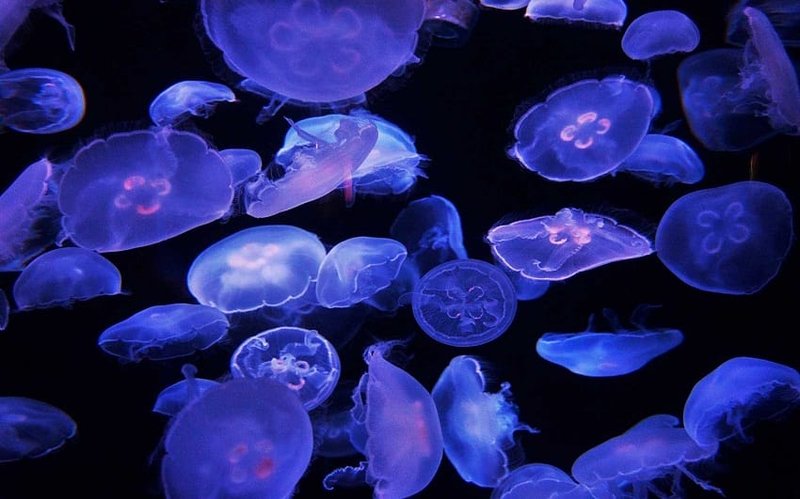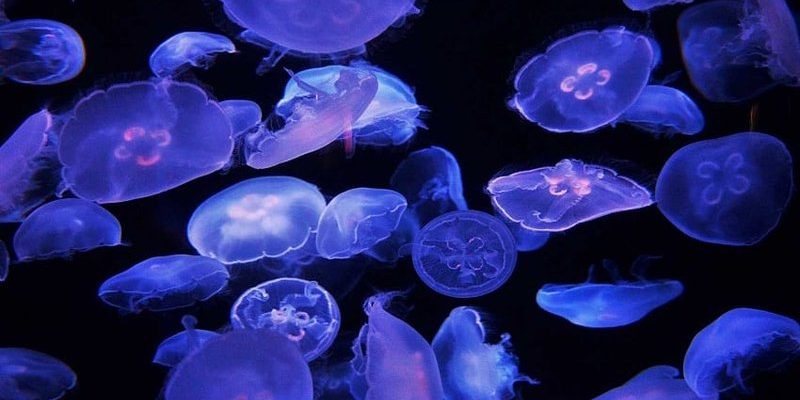
Imagine the ocean as a giant buffet where different creatures come to feast. The moon jellyfish is a master at navigating this spread, using its unique features to snag a meal effortlessly. If you’ve ever wondered what exactly these jellyfish eat and how they go about finding their food, you’re in the right place. Let’s dive into the fascinating world of the moon jellyfish’s diet and feeding habits.
What Do Moon Jellyfish Eat?
Moon jellyfish are not picky eaters. Their diet mainly consists of small marine organisms. Think of them as the ultimate opportunists of the sea. They primarily consume:
- Plankton (small drifting organisms)
- Fish eggs
- Larvae
- Small crustaceans
The moon jellyfish uses its tentacles to capture its food. These tentacles are lined with stinging cells, called nematocysts, that help to immobilize small creatures. When something brushes against the tentacles, it triggers a reaction that releases toxins. This may sound scary, but for the jellyfish, it’s a necessary part of their feeding strategy.
You might be wondering how they actually find their food in the vast ocean. Moon jellyfish tend to drift with the current, allowing them to encounter food pretty much by chance. It’s like fishing without a line, just waiting to catch a snack as they float along.
How Moon Jellyfish Capture Their Food
Now, let’s talk about the jellyfish’s unique way of snagging a meal. When prey comes close, the moon jellyfish’s tentacles spring into action. Here’s how the process works:
1. Detection: Their tentacles can sense nearby movement. The jellyfish feels when something is close enough to catch.
2. Stinging: Once detected, the jellyfish uses its stinging cells to paralyze its prey, making it easier to consume.
3. Bringing In: The food is then transported to the mouth, which is located on the underside of the jellyfish’s bell.
This method is quite effective, given that moon jellyfish don’t have to expend much energy. They simply float along, waiting for meals to come to them. It’s a laid-back approach to dining, isn’t it?
The Role of Plankton in the Moon Jellyfish Diet
Plankton plays a starring role in the diet of moon jellyfish. These tiny organisms might be small, but they’re abundant in the ocean. Let’s break down why plankton is so crucial:
– High Availability: Plankton is found in nearly every part of the ocean. That makes it a reliable food source for moon jellyfish, no matter where they are.
– Nutritional Value: Many types of plankton are rich in nutrients, providing jellyfish with the energy they need to survive and thrive.
Interestingly, plankton comes in two forms: phytoplankton (plant-like) and zooplankton (animal-like). Moon jellyfish consume both, but they primarily favor zooplankton. Think of zooplankton as the mini-snacks floating in the ocean that jellyfish can enjoy throughout their day.
Feeding Habits in Different Environments
The feeding habits of moon jellyfish can vary based on their surroundings. For example, in areas rich with nutrients, they might feast more frequently due to the abundance of plankton. Conversely, in less nutrient-rich waters, they may have to work a bit harder for their meals.
Different environments also influence the types of prey available. In coastal regions, moon jellyfish might encounter more fish larvae and small crustaceans, while in open ocean areas, they rely heavily on phytoplankton and zooplankton.
The moon jellyfish’s adaptability is what makes them so successful in different habitats. They can thrive in both warm, shallow waters and cooler, deeper areas, making them truly versatile eaters.
How Often Do Moon Jellyfish Eat?
You might be curious about how often moon jellyfish need to eat. The good news is that they don’t have to chow down constantly. Because their bodies are mostly water, they can survive on relatively small amounts of food.
In a day, they might eat a few meals, but it’s not like dining three times a day as humans do. Instead, they take advantage of the food available to them throughout the day and night. Since moon jellyfish are mostly passive feeders, they rely on the currents to bring food to them.
This means sometimes they might miss out on meals, but they can still get by, thanks to their ability to thrive on minimal sustenance.
How Do Moon Jellyfish Digest Their Food?
After capturing their meals, moon jellyfish need to break down the food to absorb nutrients effectively. The digestion process is quite simple, as they don’t have a complex stomach like many creatures do. Here’s how it works:
1. Ingestion: Once the prey is brought to the mouth, it is swallowed and enters the gastrovascular cavity.
2. Digestion: Enzymes in the cavity break down the food into a more manageable form.
3. Absorption: The nutrients are then absorbed into the jellyfish’s body, providing energy and sustenance.
This process is relatively efficient, though it doesn’t require much energy. So while moon jellyfish may not eat a lot, what they do consume is quickly converted into the energy they need to float gracefully through the ocean.
Why Understanding Their Diet Matters
Understanding the diet and feeding habits of moon jellyfish goes beyond mere curiosity. It has implications for marine ecosystems. Moon jellyfish are often considered indicators of ocean health.
If there are too many jellyfish, it can signal an imbalance in the ecosystem. Factors like overfishing, pollution, and climate change can lead to changes in plankton populations, ultimately affecting jellyfish food sources.
Keeping tabs on moon jellyfish can help scientists monitor ocean health. So next time you see a jellyfish, remember they’re not just floating by—they’re part of a much larger picture.
In conclusion, the diet and feeding habits of the moon jellyfish reveal a fascinating side of these creatures. From their opportunistic eating strategies to their role in the ecosystem, there’s much to appreciate about these delicate beings. So, whether you’re at the beach or exploring the depths of the sea, you can now see jellyfish in a whole new light!

